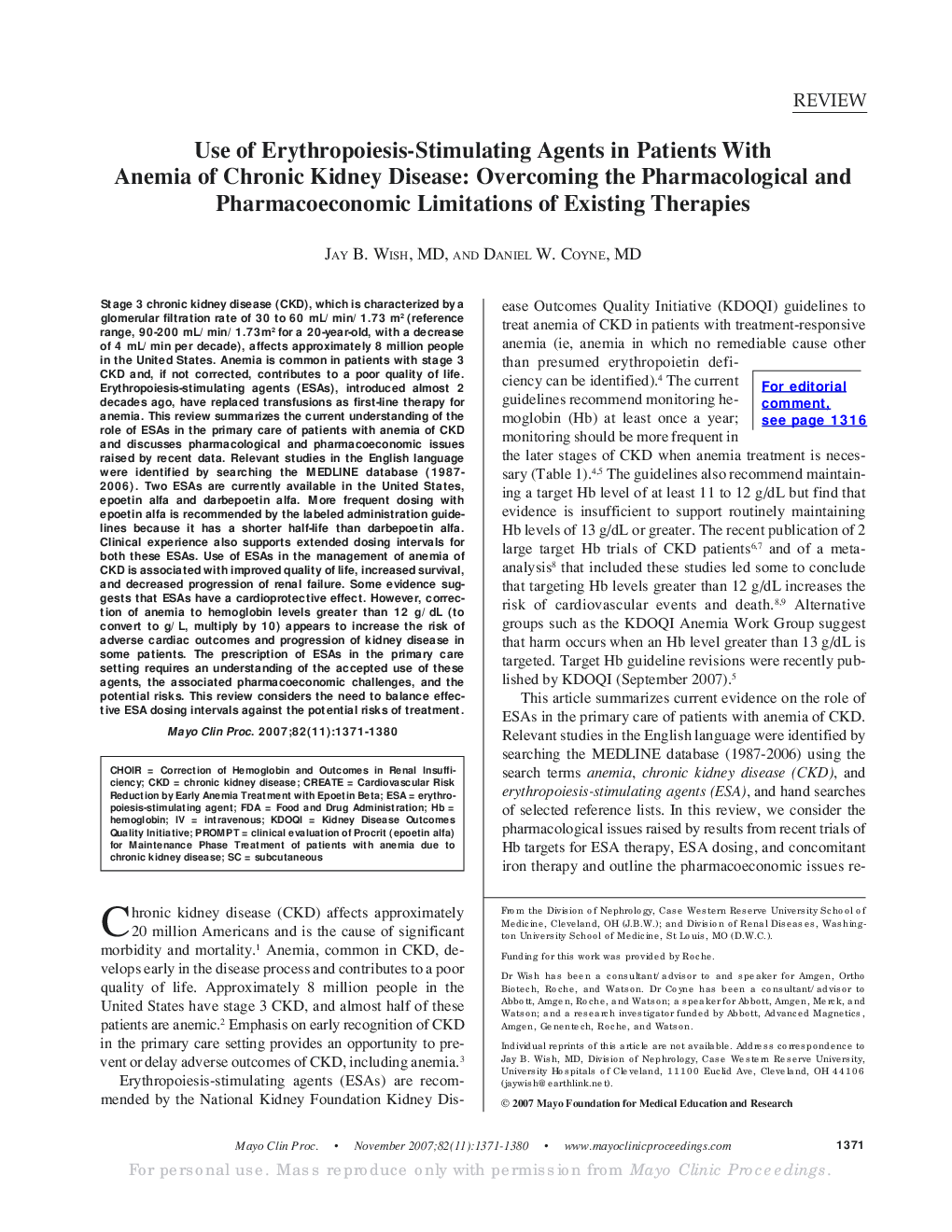| کد مقاله | کد نشریه | سال انتشار | مقاله انگلیسی | نسخه تمام متن |
|---|---|---|---|---|
| 3000308 | 1180326 | 2007 | 10 صفحه PDF | دانلود رایگان |
عنوان انگلیسی مقاله ISI
Use of Erythropoiesis-Stimulating Agents in Patients With Anemia of Chronic Kidney Disease: Overcoming the Pharmacological and Pharmacoeconomic Limitations of Existing Therapies
دانلود مقاله + سفارش ترجمه
دانلود مقاله ISI انگلیسی
رایگان برای ایرانیان
کلمات کلیدی
ESACREATEKDOQIFDAKidney Disease Outcomes Quality Initiative - ابتکار کیفیت نتایج کلی بیماری کبدchronic kidney disease - بیماری مزمن کلیویIntravenous - داخل وریدیsubcutaneous - زیر جلدیFood and Drug Administration - سازمان غذا و داروprompt - سریعerythropoiesis-stimulating agent - عامل تحریک کننده erythropoiesisCKD - نارسایی مزمن کلیهHemoglobin - هموگلوبینChoir - گروه کر
موضوعات مرتبط
علوم پزشکی و سلامت
پزشکی و دندانپزشکی
کاردیولوژی و پزشکی قلب و عروق
پیش نمایش صفحه اول مقاله

چکیده انگلیسی
Stage 3 chronic kidney disease (CKD), which is characterized by a glomerular filtration rate of 30 to 60 mL/min/1.73 m2 (reference range, 90-200 ml/min/1.73m2 for a 20-year-old, with a decrease of 4 mL/min per decade), affects approximately 8 million people in the United States. Anemia is common in patients with stage 3 CKD and, if not corrected, contributes to a poor quality of life. Erythropoiesis-stimulating agents (ESAs), introduced almost 2 decades ago, have replaced transfusions as first-line therapy for anemia. This review summarizes the current understanding of the role of ESAs in the primary care of patients with anemia of CKD and discusses pharmacological and pharmacoeconomic issues raised by recent data. Relevant studies in the English language were identified by searching the MEDLINE database (1987-2006). Two ESAs are currently available in the United States, epoetin alfa and darbepoetin alfa. More frequent dosing with epoetin alfa is recommended by the labeled administration guidelines because it has a shorter half-life than darbepoetin alfa. Clinical experience also supports extended dosing intervals for both these ESAs. Use of ESAs in the management of anemia of CKD is associated with improved quality of life, increased survival, and decreased progression of renal failure. Some evidence suggests that ESAs have a cardioprotective effect. However, correction of anemia to hemoglobin levels greater than 12 g/dL (to convert to g/L, multiply by 10) appears to increase the risk of adverse cardiac outcomes and progression of kidney disease in some patients. The prescription of ESAs in the primary care setting requires an understanding of the accepted use of these agents, the associated pharmacoeconomic challenges, and the potential risks. This review considers the need to balance effective ESA dosing intervals against the potential risks of treatment.
ناشر
Database: Elsevier - ScienceDirect (ساینس دایرکت)
Journal: Mayo Clinic Proceedings - Volume 82, Issue 11, November 2007, Pages 1371-1380
Journal: Mayo Clinic Proceedings - Volume 82, Issue 11, November 2007, Pages 1371-1380
نویسندگان
Jay B. MD, Daniel W. MD,